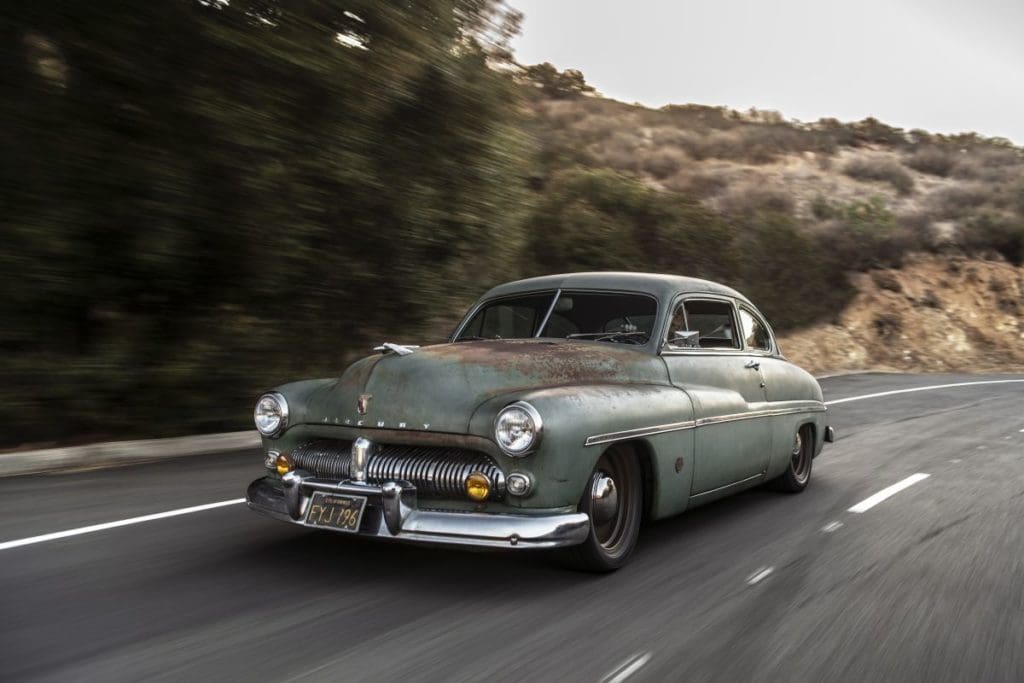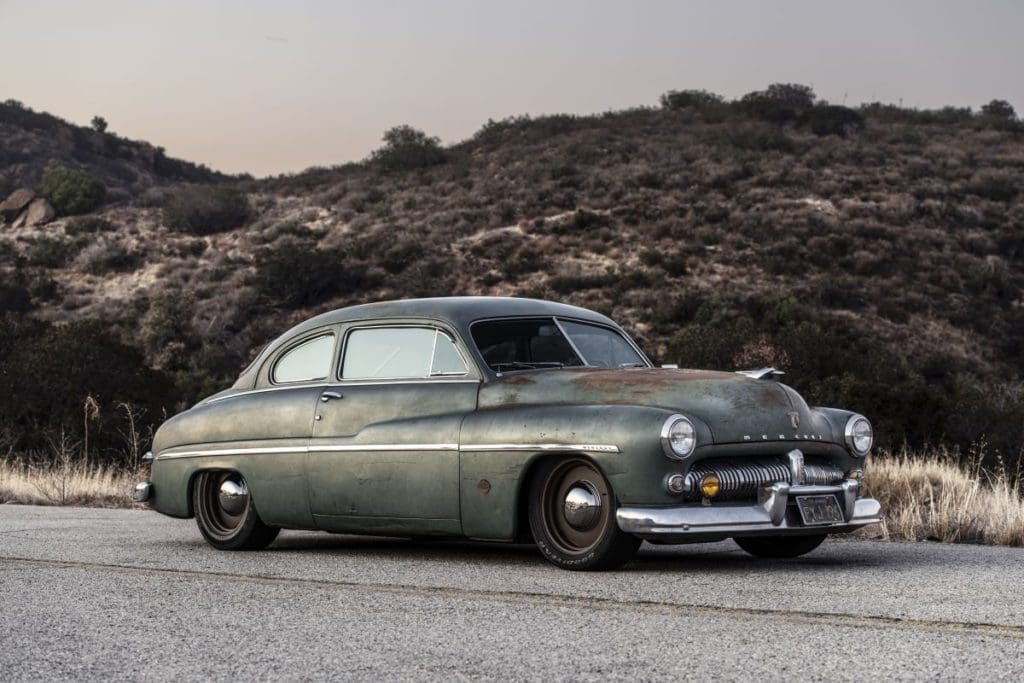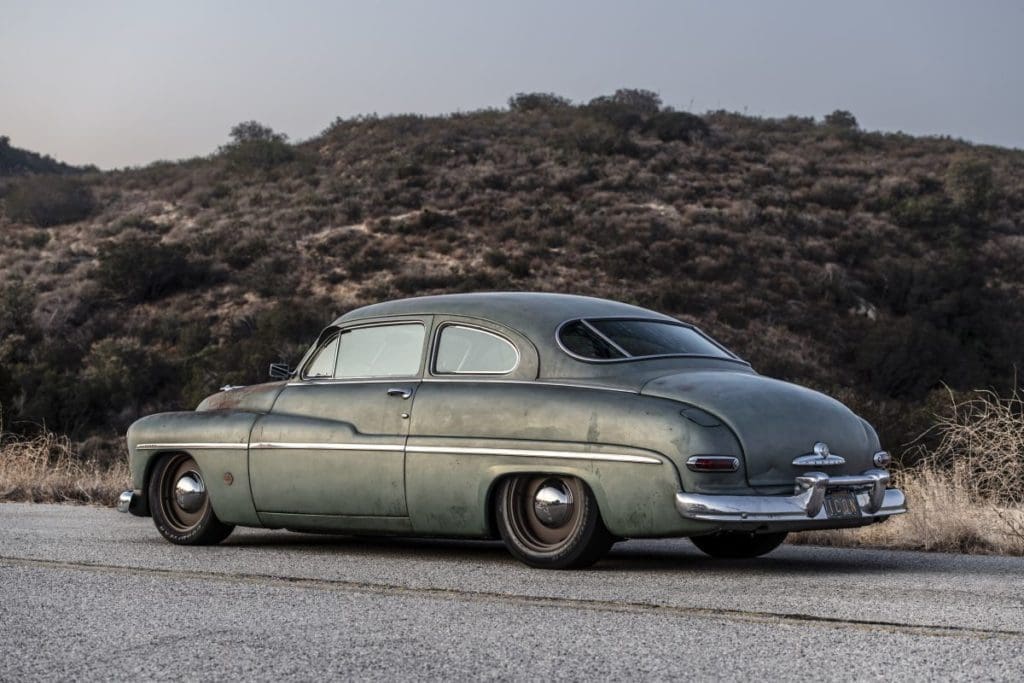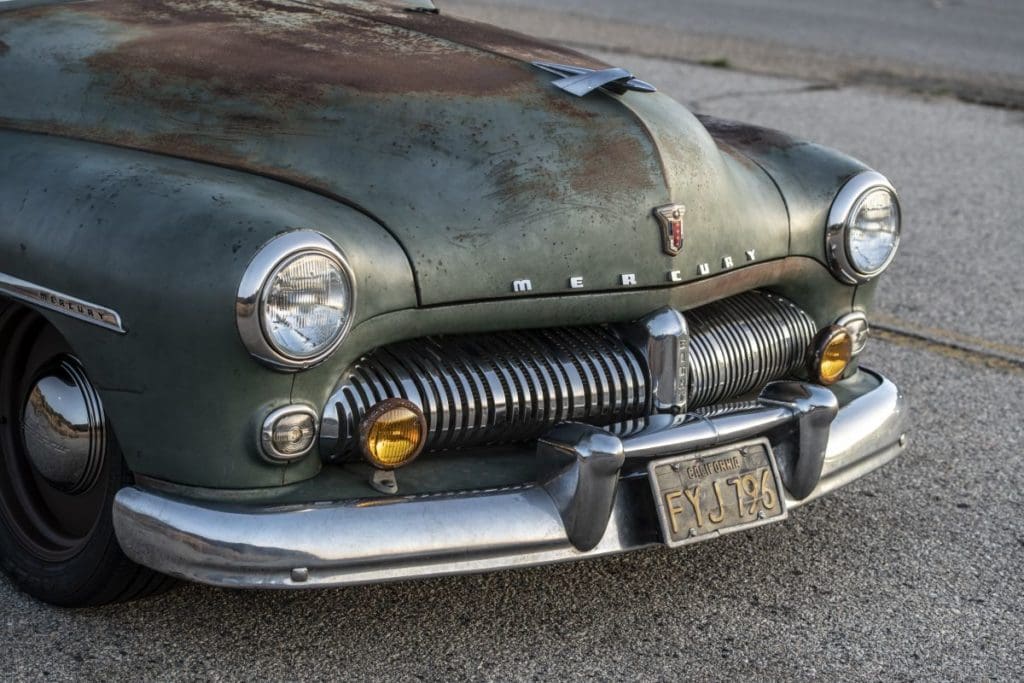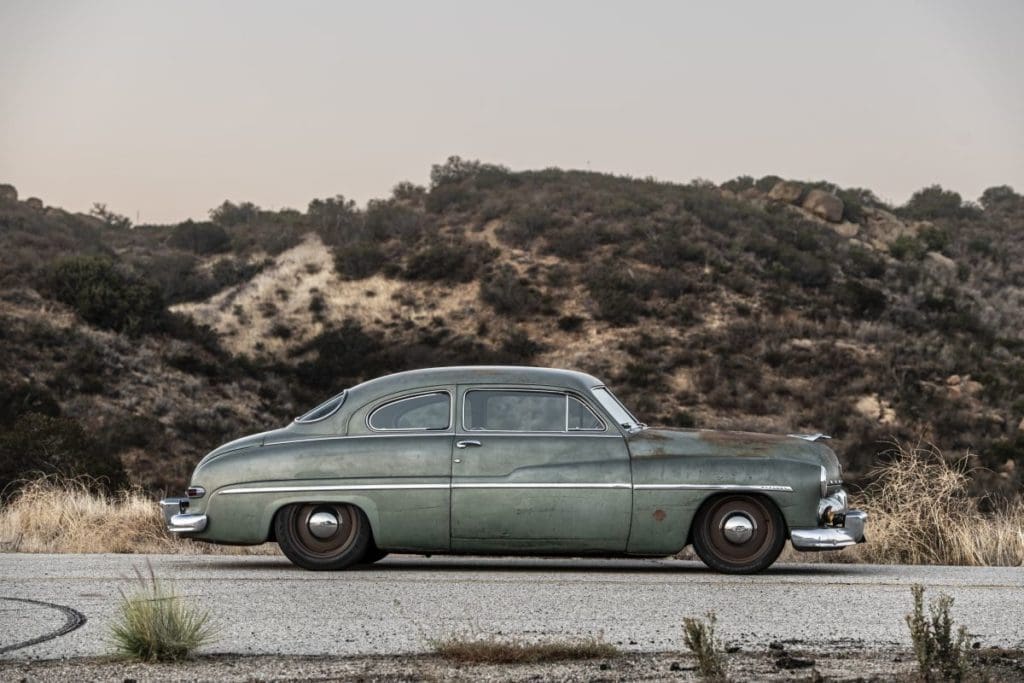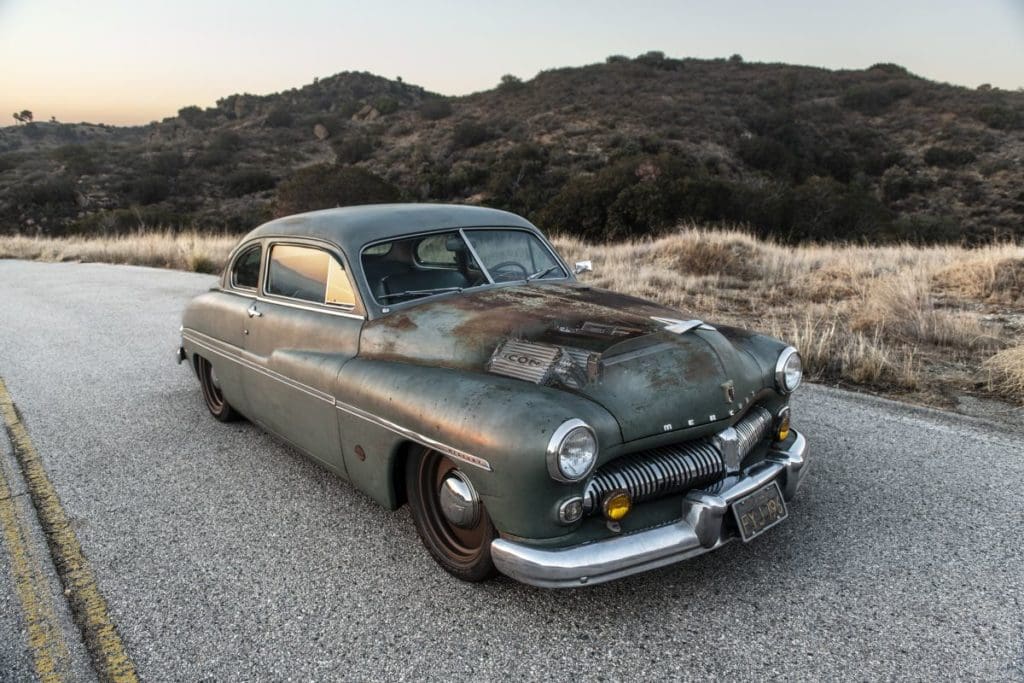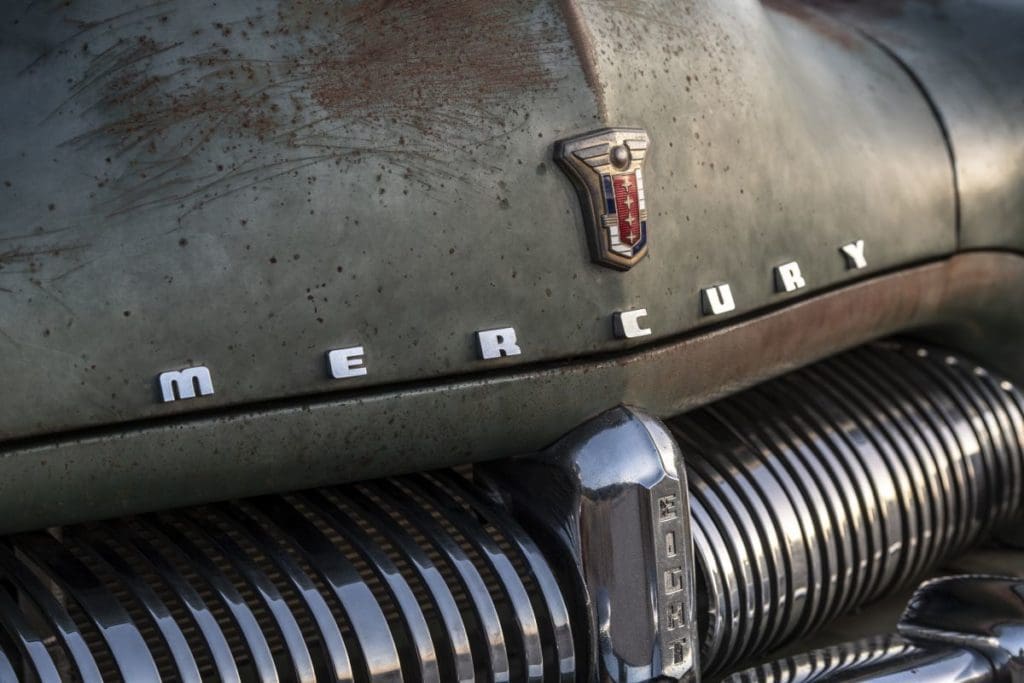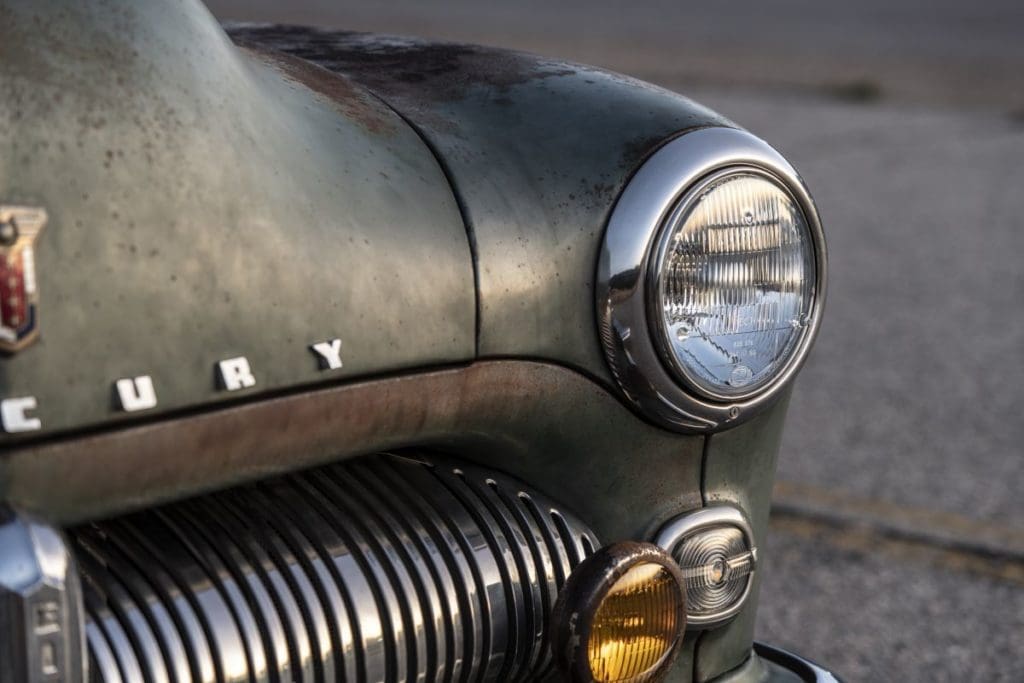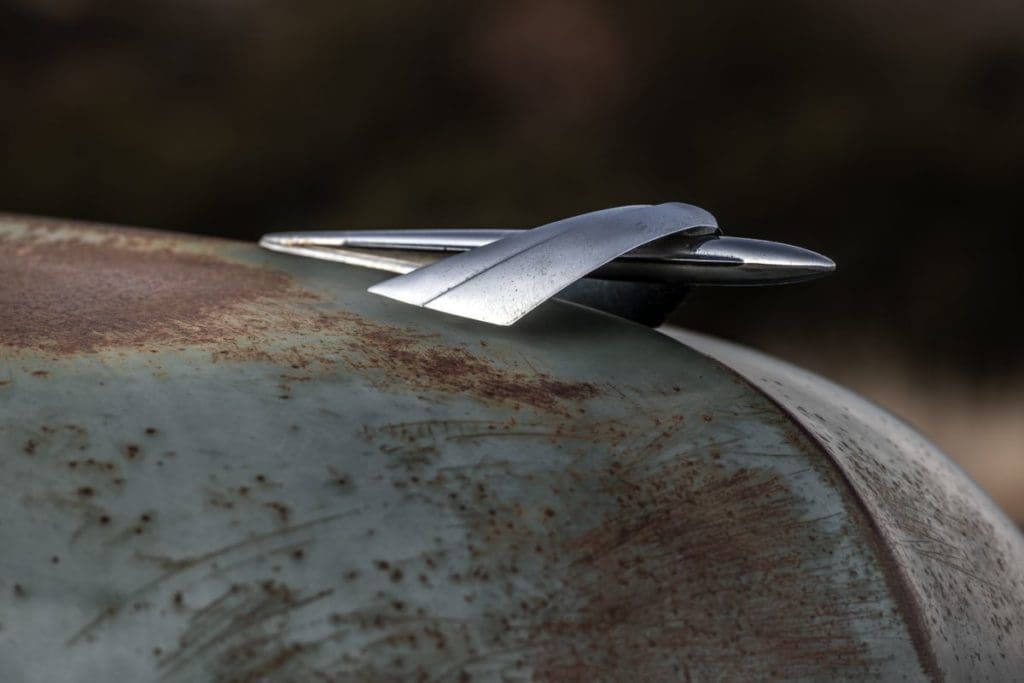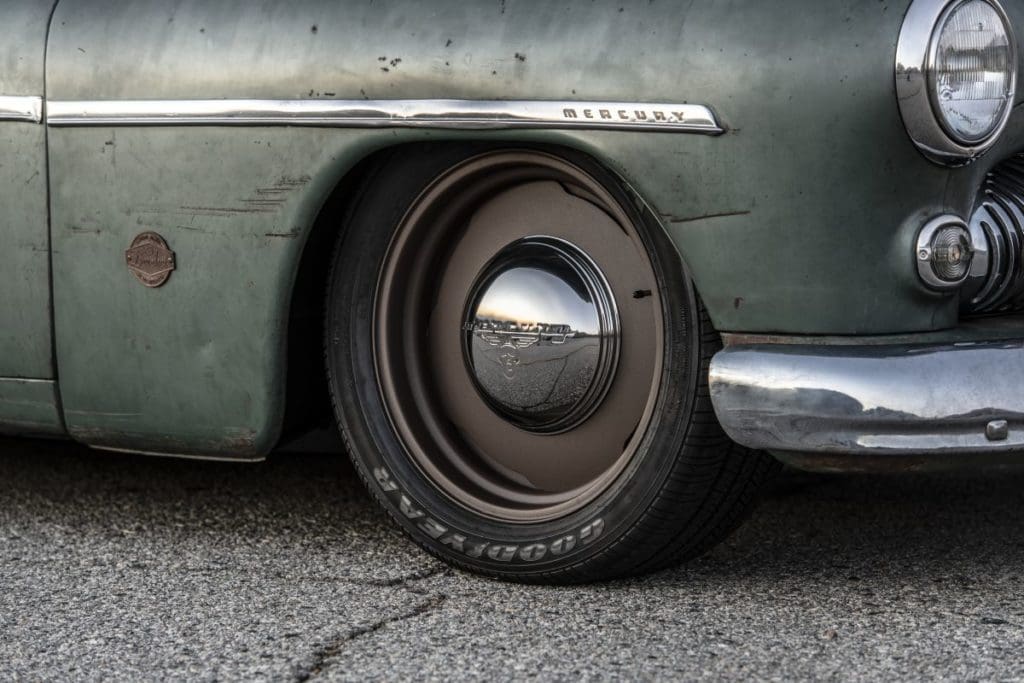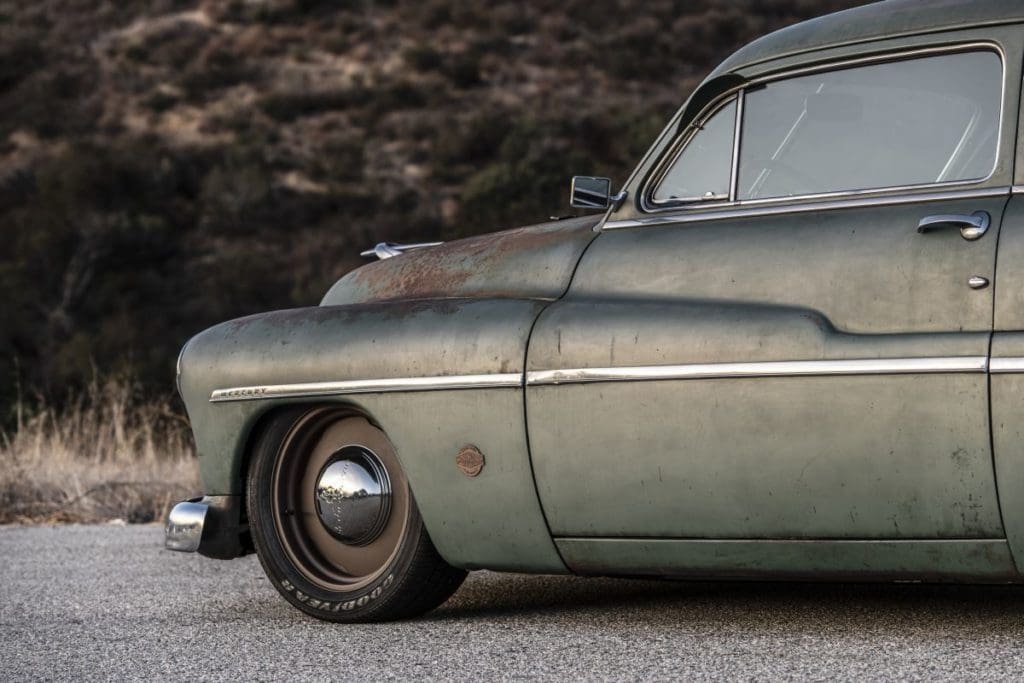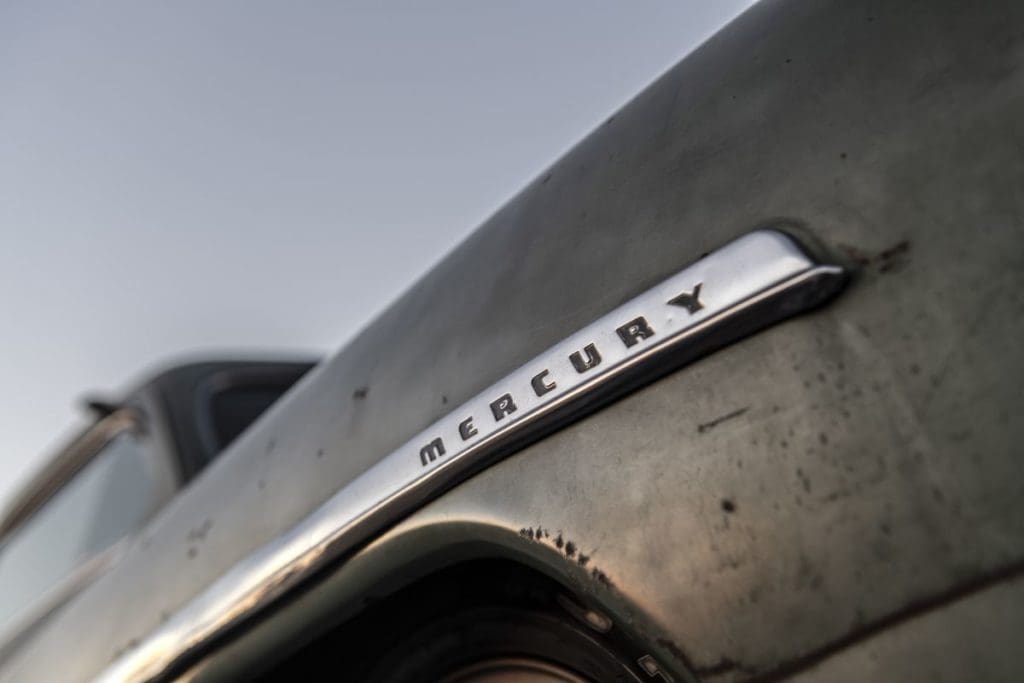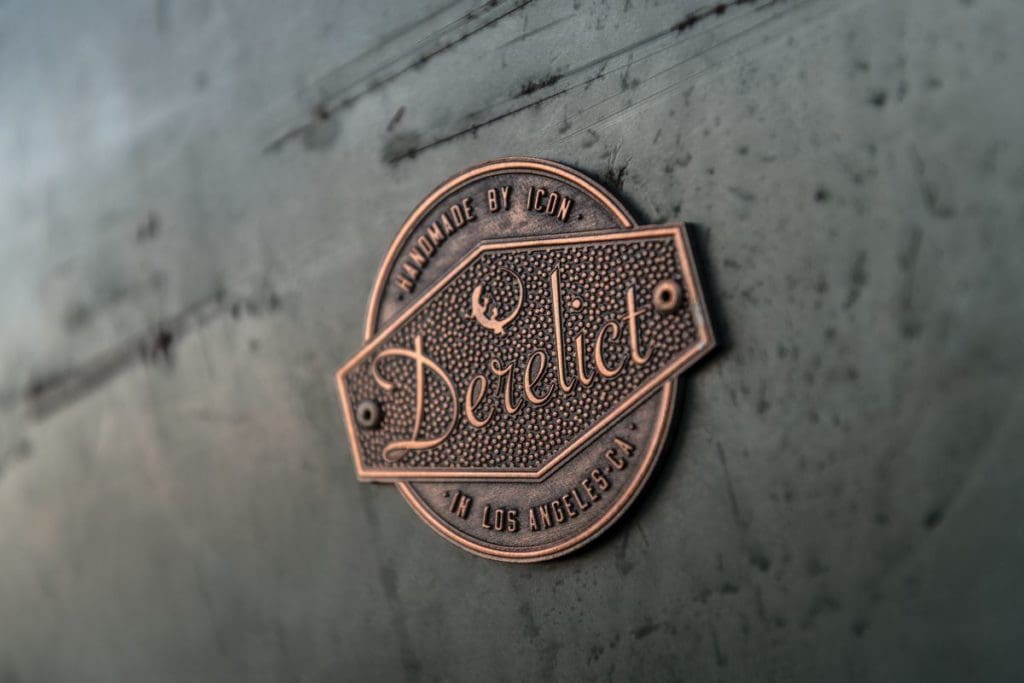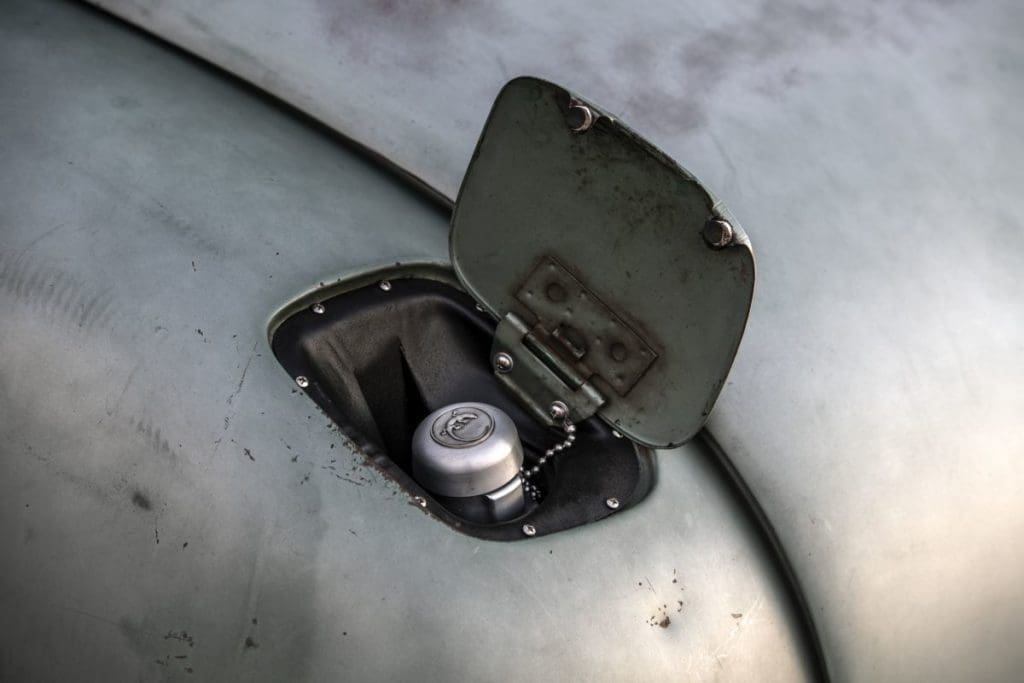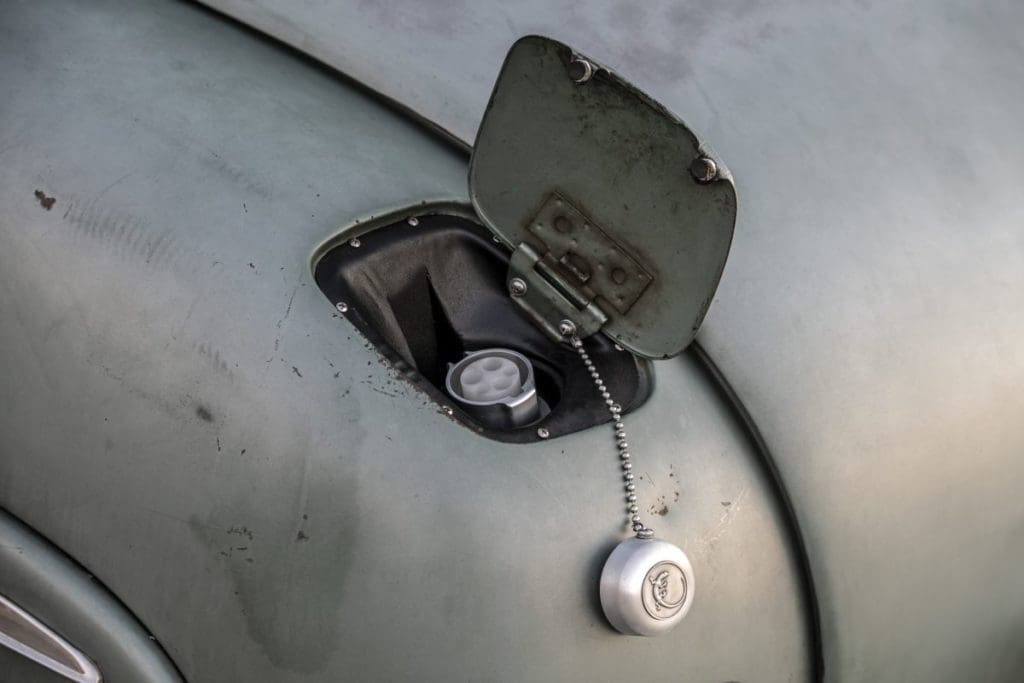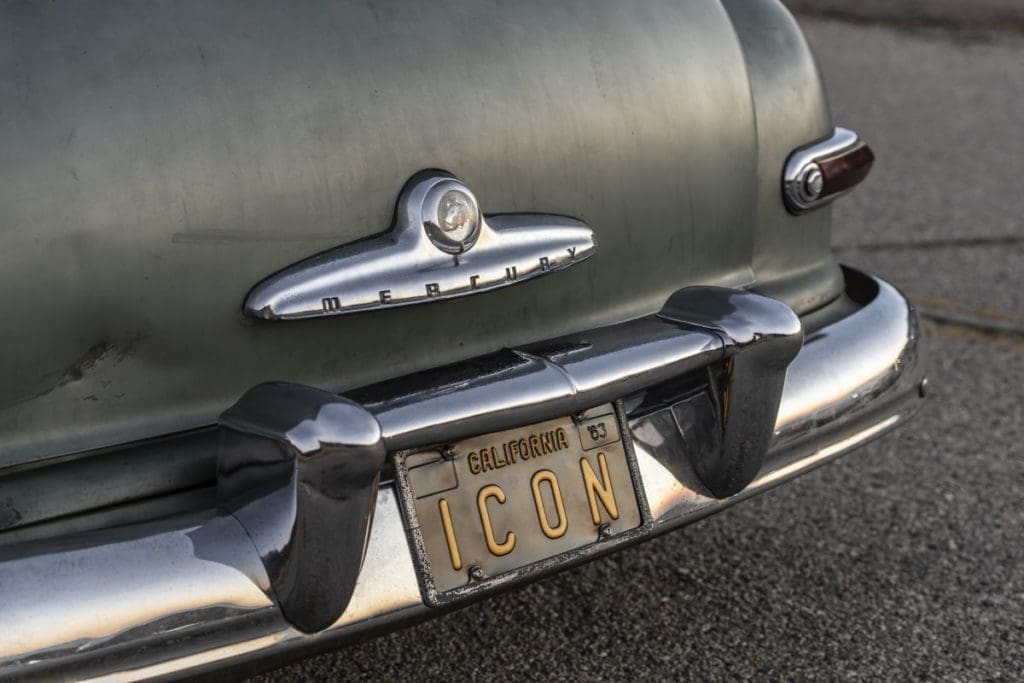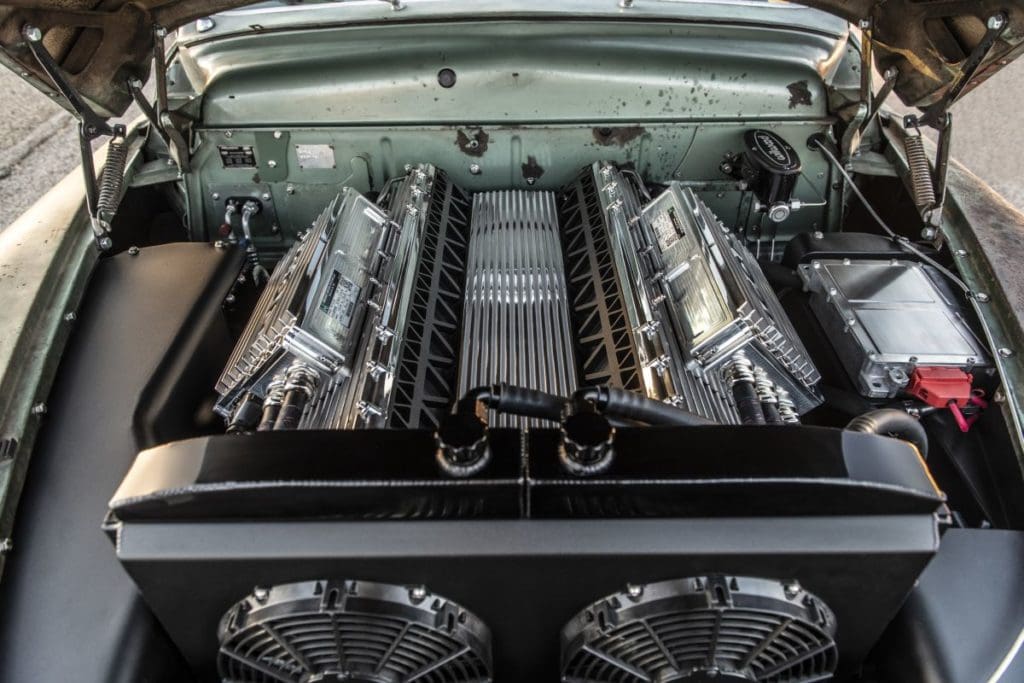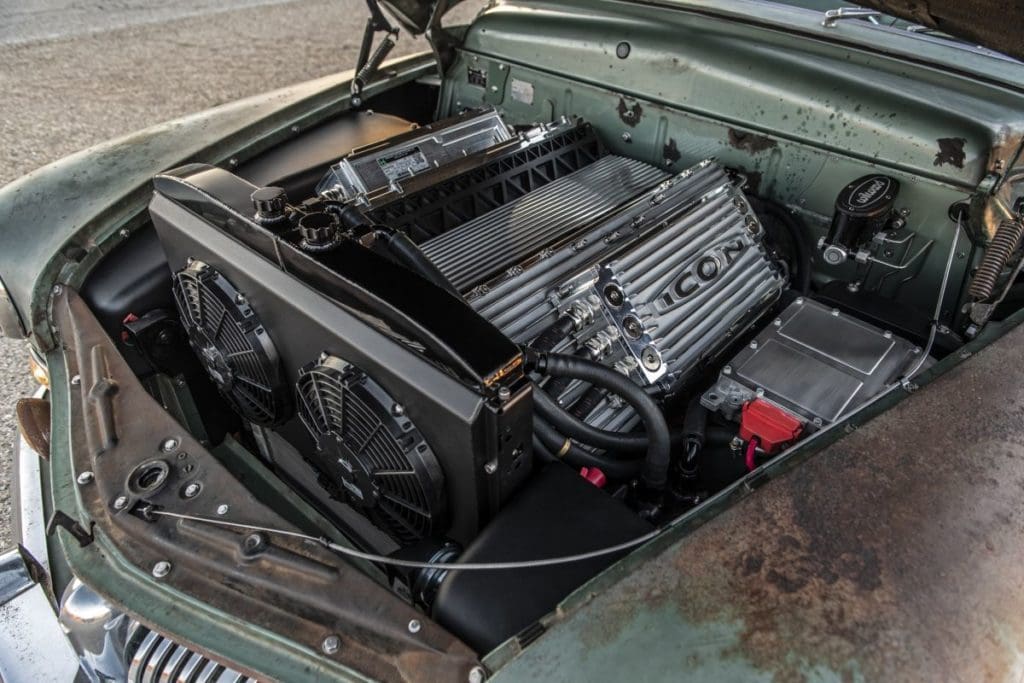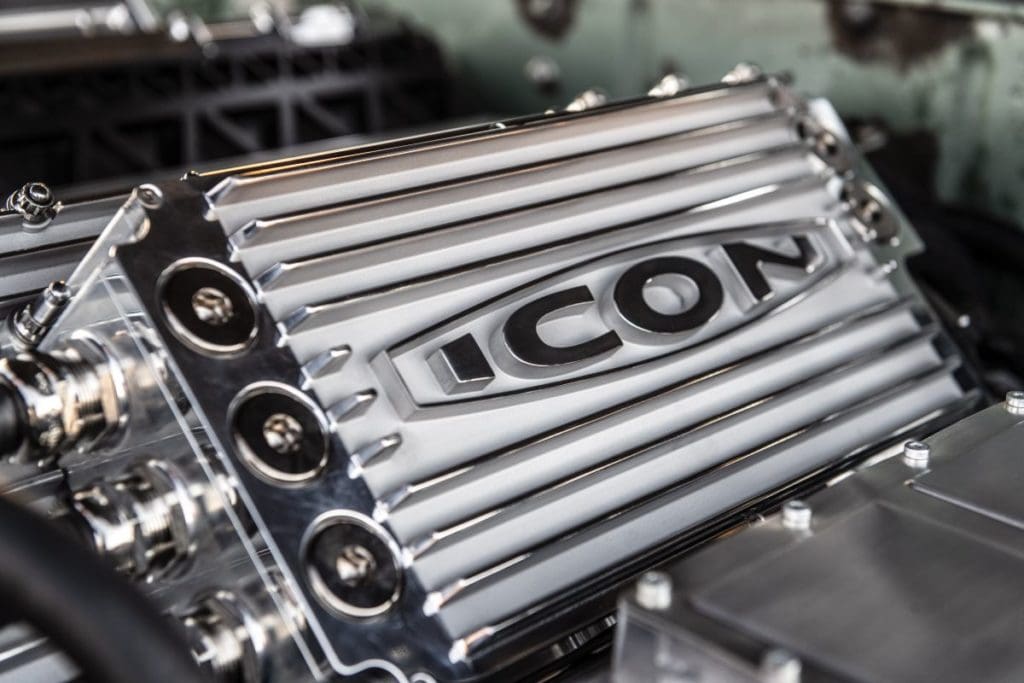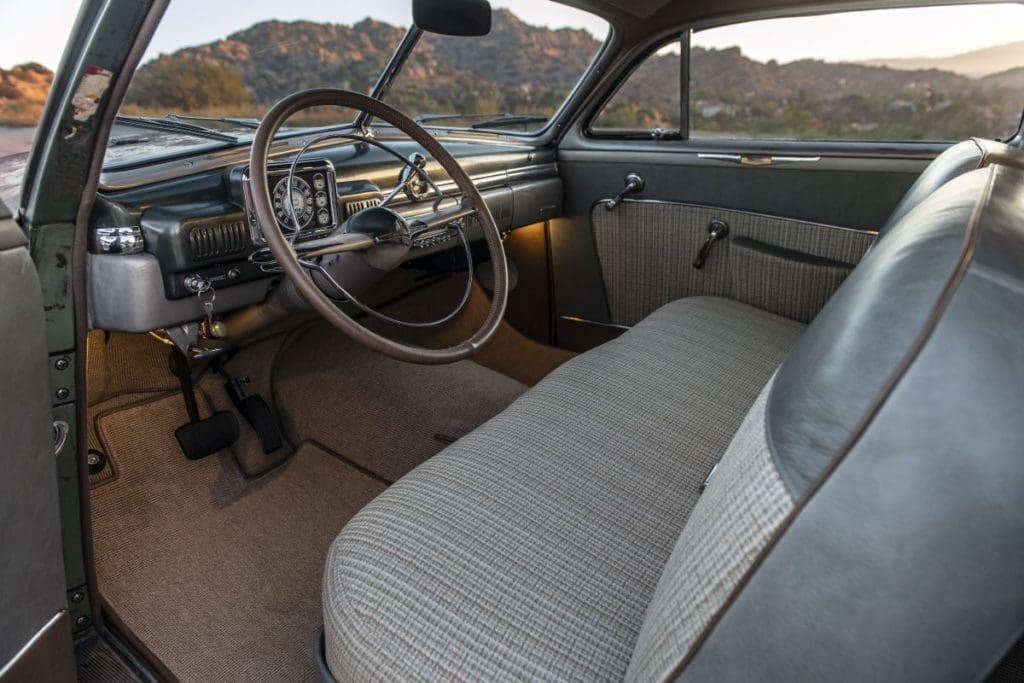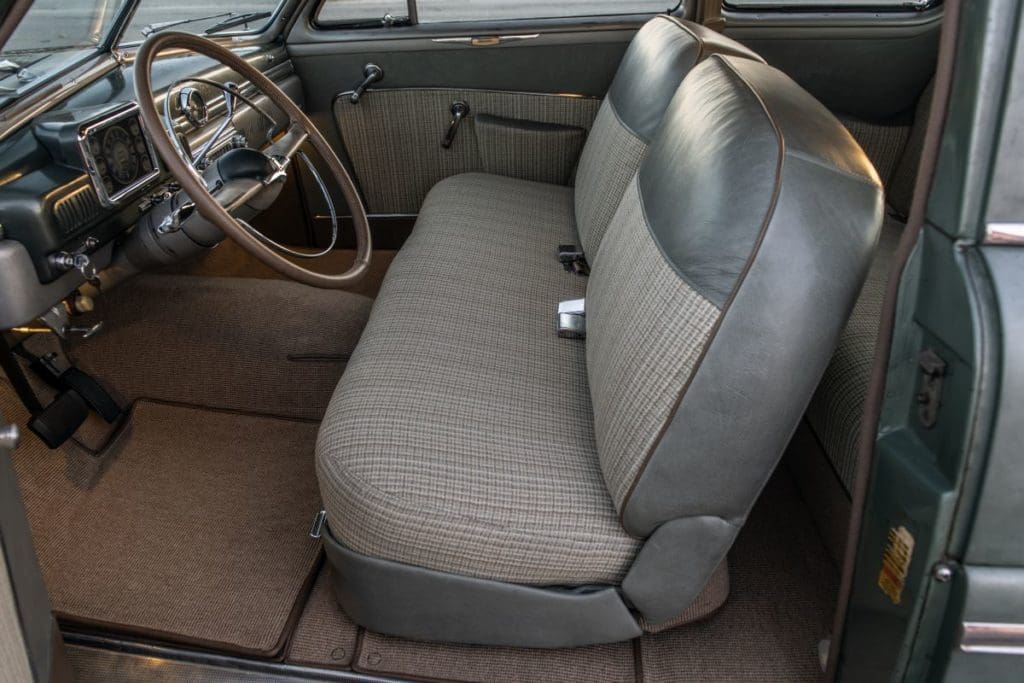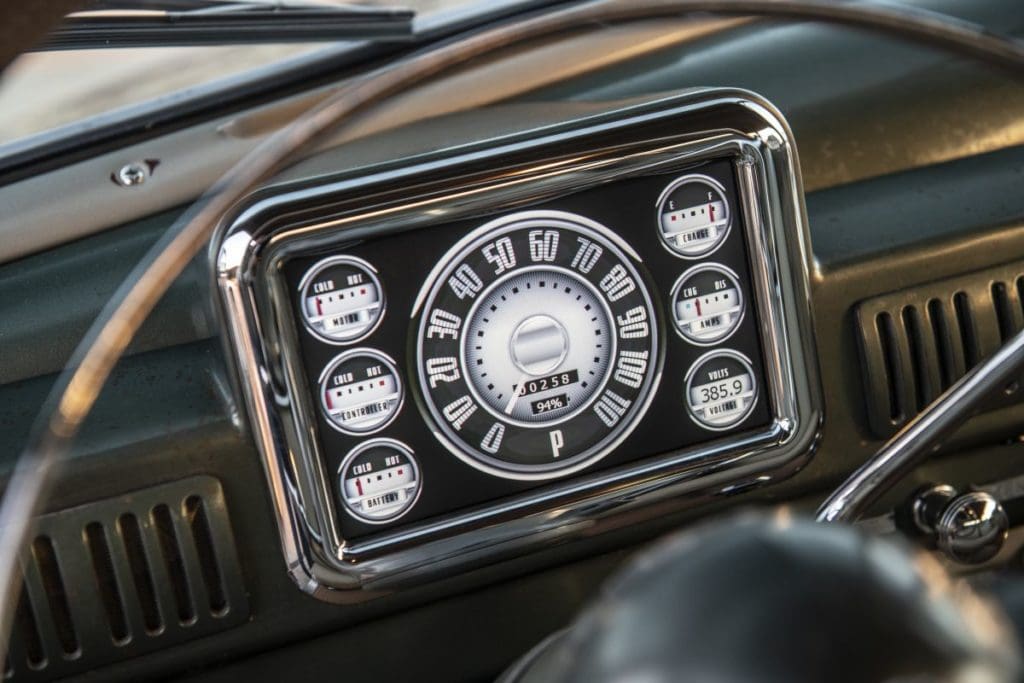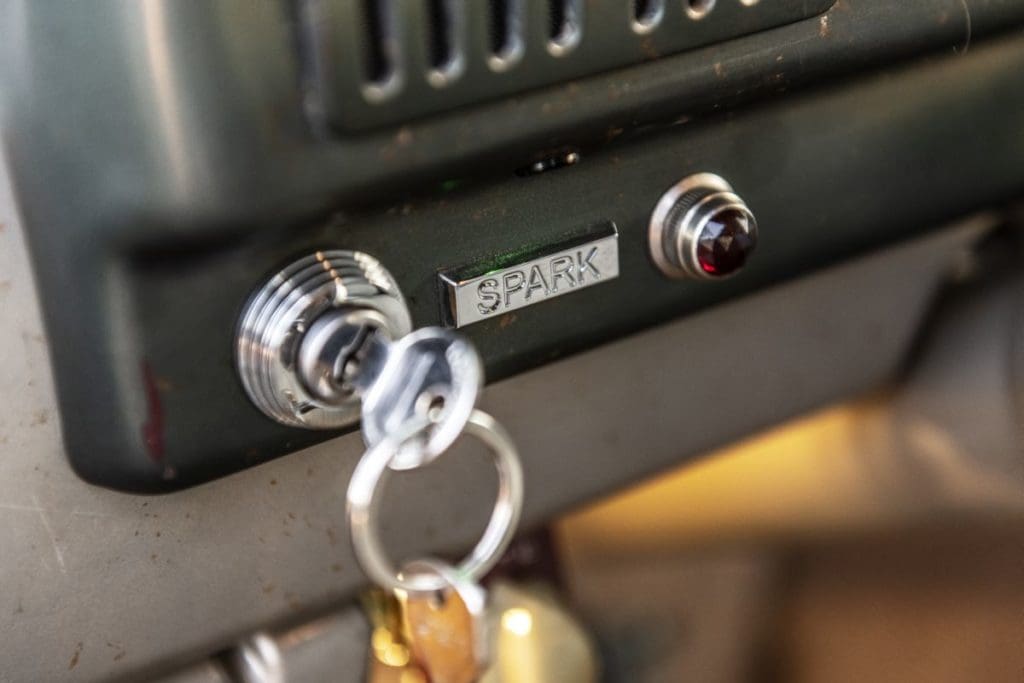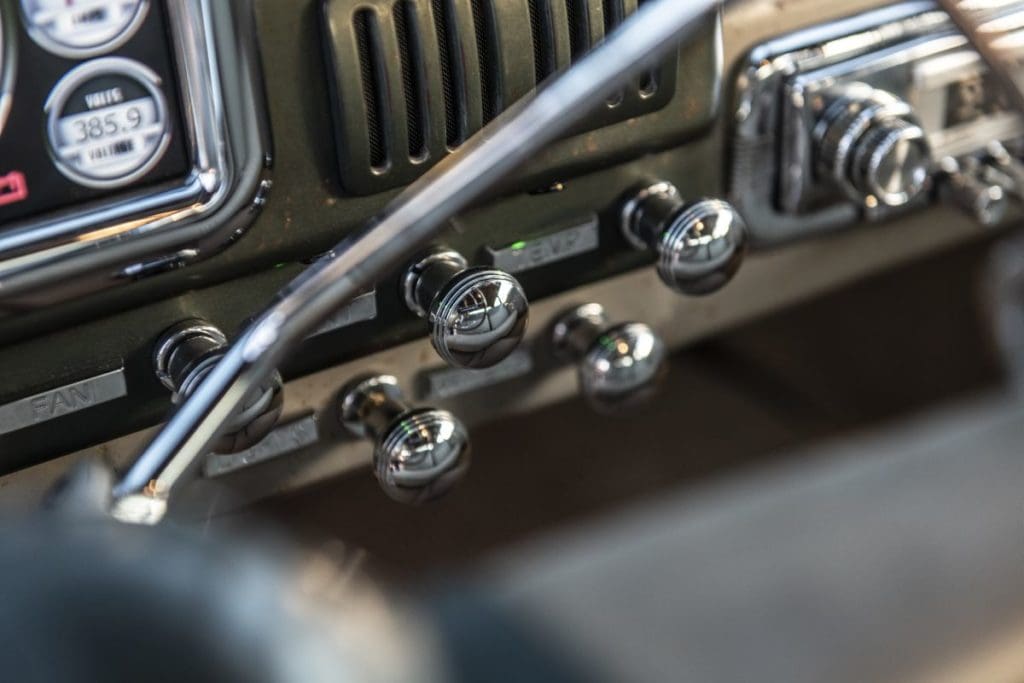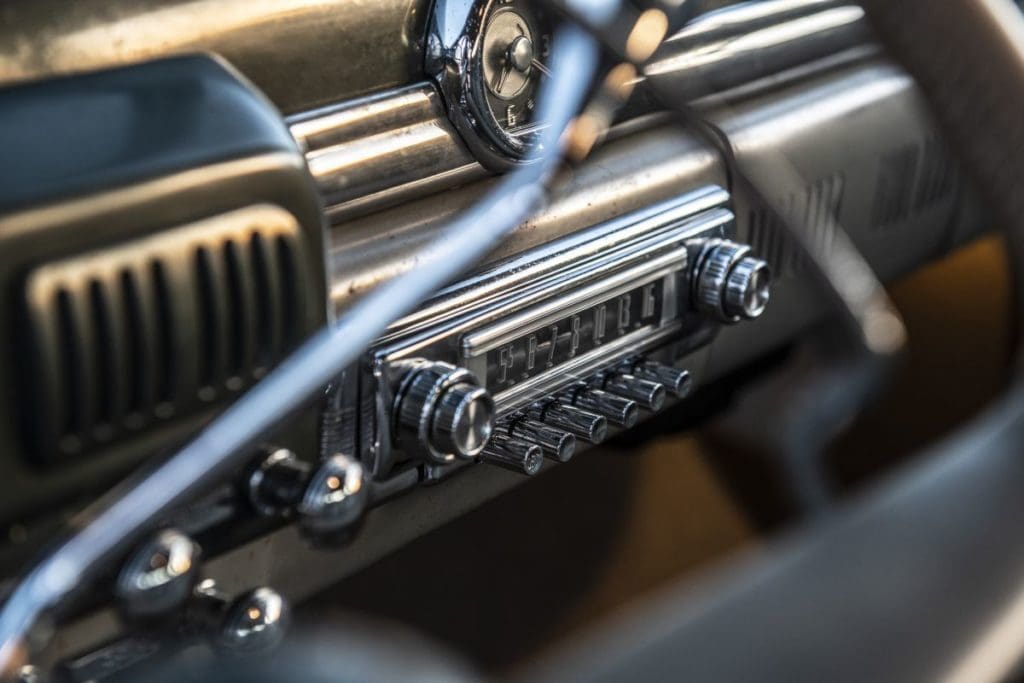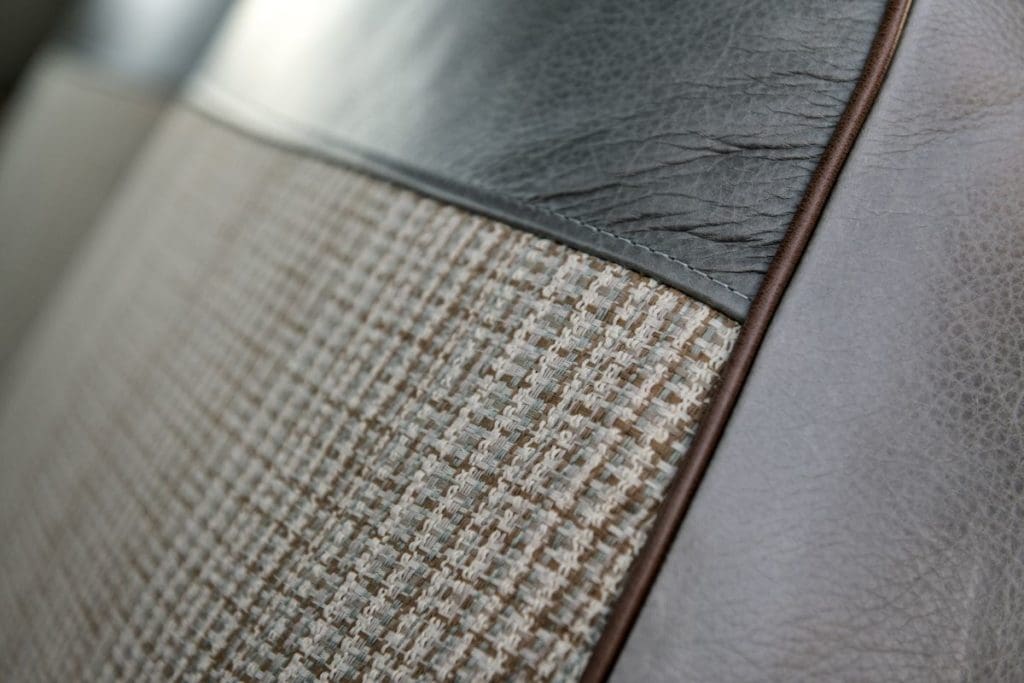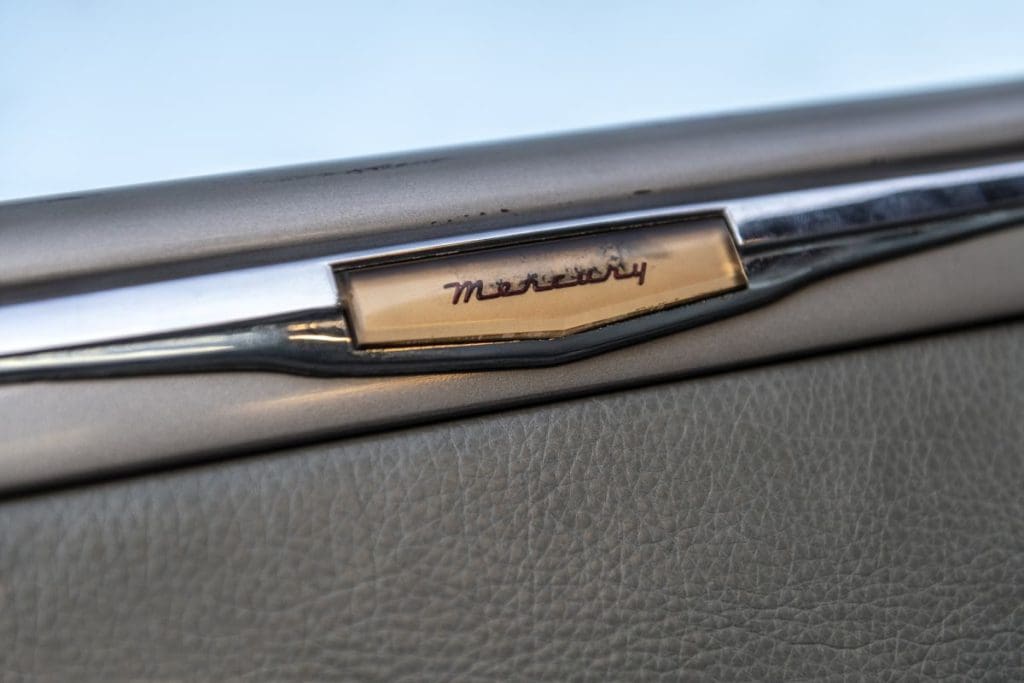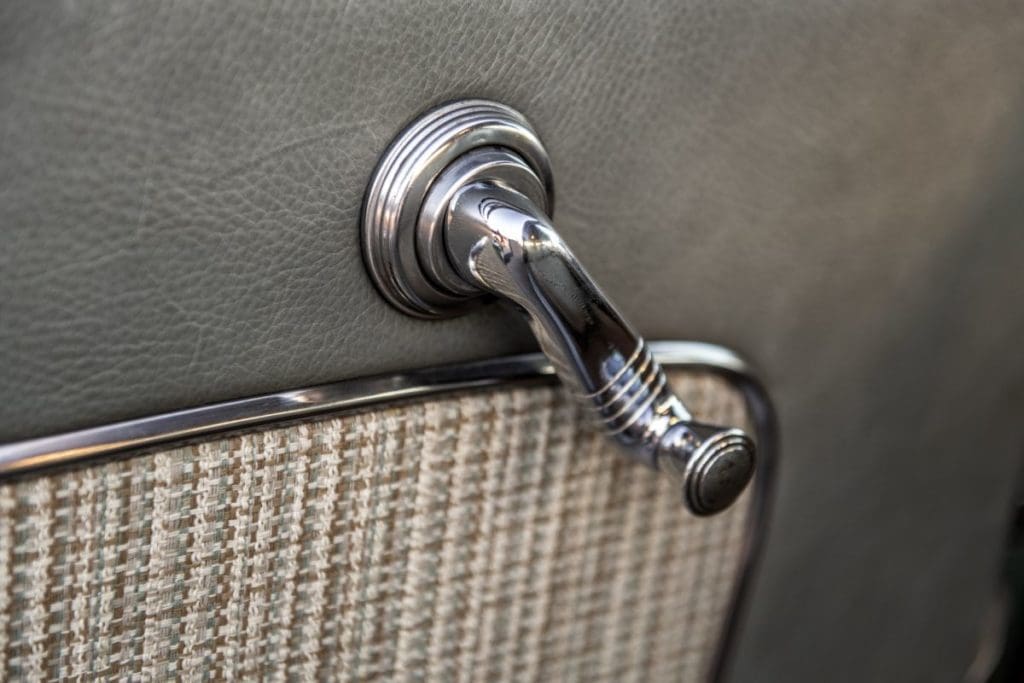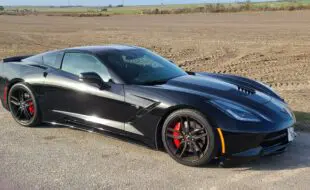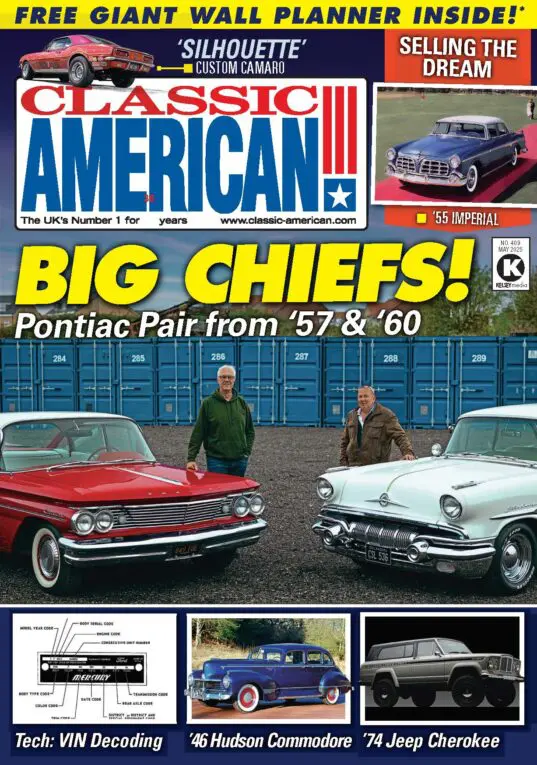1949 Mercury
This 1949 Mercury looks like the ultimate patina’d bad boy, however as Huw Evans discovers it actually combines timeless looks with a state-of-the-art powertrain…
Words: Huw Evans, Images: ICON
Enjoy more Classic American reading in the monthly magazine.
Click here to subscribe & save.
ICON is the Los Angeles based entity that’s carved a name for itself in building recreations of classic 4x4s such as the FJ and BR (which pay homage to the original Toyota FJ40 Land Cruiser and 1966-77 Ford Bronco respectively). The company has since branched out into offering other models, such as its TR vintage trucks, plus its Reformer and Derelict lines. The latter takes an original, classic vehicle, one that often displays the effect of time and use on its coachwork and completely upgrades the chassis and running gear with modern components.
The best of both worlds
The end result is an infinitely useable, yet utterly distinctive vehicle that retains its exterior patina and character. Past projects in ICON’s Derelict line range from a 1951 De Soto wagon (ICON’s first ever Derelict project) to a 1953 Dodge M37 military truck to a 1948 Buick Super Convertible (previously featured in Classic American).
ICON’s latest Derelict creation however, goes a step further. Unveiled at the 2018 SEMA Show in Las Vegas, this 1949 Mercury Club Coupe unmistakably follows in the Derelict tradition on the surface, but what lies beneath is distinctly radical. Purchased from its original Southern California owners and commissioned by longtime client for ICON to build, you’d think that at a glance, this just a well-used and well-loved 70-year old car that apart from a lowered stance; looks almost factory stock. We’ll that’s essentially the idea…
Not a Flathead
When you pop the hood however, that’s when you realize this car is radical. Instead of a 255 cubic inch Flathead V8, you’re greeted with massive twin electric fans and aluminum encased battery controllers that are cleverly configured to resemble a V8 engine. Pop open the fuel filler door on the driver’s side rear quarter panel and instead of a traditional neck and petrol cap, you’ll find a Tesla Supercharger plug-in electrical socket.
Yes, you’ve guessed it, this sucker’s electric. The Merc features a dual-electric motor mounted where the transmission once sat, along with a Tesla 85 kW/h battery system that’s spread throughout the car to help optimize weight distribution as well as store energy for the electric motor. ICON says that the electric powertrain—co-developed with Stealth EV cranks out the equivalent of 400bhp and 470 lb ft of torque, able to propel the vintage Merc to a stop speed of 120 mph. Range is said to estimated between 150-200 miles, while the Tesla Supercharger socket and CHAdeMO 125A fast charger mounted behind the front licence plate frame, allow for the car to be fully recharged in as little as 1.5 hours.
ICON also says that a specially designed pioneering EV management system prevents battery overcharging, as well as additional protection by thermal management of the powertrain. Besides the powertrain, the Merc also boasts a thoroughly modern chassis and suspension system developed in conjunction with Art Morrison Enterprises. Handling and braking are simply leagues ahead of what an original 1949 Mercury is capable of thanks to fully independent front and rear suspension along with modern four-wheel Brembo disc brakes and rolling stock.
Traditional, but modern
Inside, the Merc appears to be pure vintage at a glance, and indeed the upholstery looks decidedly period in colour and texture. More & Giles and Relicate Leather was used for trimming the seats and door panels, along with fabric from Knoll Textiles.
It’s the details that set this car apart however. While it may look like the Mercury has manual window cranks, the handles are in fact electric buttons—tap them and the windows go up and down automatically. The instrument panel also sports a set of Andromeda digital gauges, though the style and design of the gauge faces creates a classic look—one that blends in with the rest of the interior.
There’s also an electrically operated air conditioning system with specially designed vents and a host of custom switches and bezels that look vintage, but are modern in function. Although the body may look completely untouched it was in fact, painstakingly disassembled, with brand-new insulation, sound deadening and weather stripping carefully added before being put back together. It’s only when you get up close that you can truly see the level of thought and detail that went into this car.
Show stopper
No matter what your views might be on electric vehicles, you can’t deny that this one-of-a-kind Mercury is a show stopper of the first order and at this year’s SEMA Show it was a crowd favourite. Not only that, but this Mercury clearly demonstrates that electric vehicles don’t always have to be futuristic or radical in appearance. Instead, it proves that in this day and age, the ability to fuse classic design with the latest in propulsion technology allows for many different and unique variations.
With the idea of EV powered classic and special interest vehicles slowly gaining traction (another highlight at this year’s SEMA Show was GM’s electric powered Camaro drag car), ICON’s show stopping Mercury could potentially pave the way for more EV powered classics. And with the potential for classic styling, low maintenance, monster torque on tap, not to mention a simulated motor under the hood and magical V8 soundtrack, what’s not to like?

